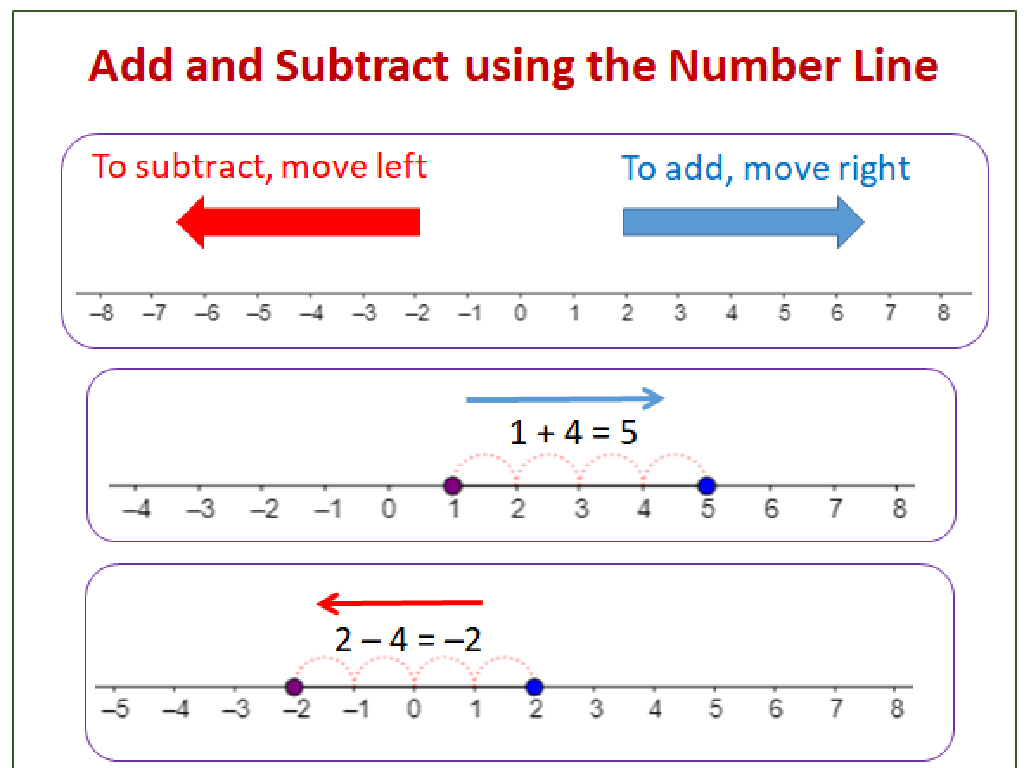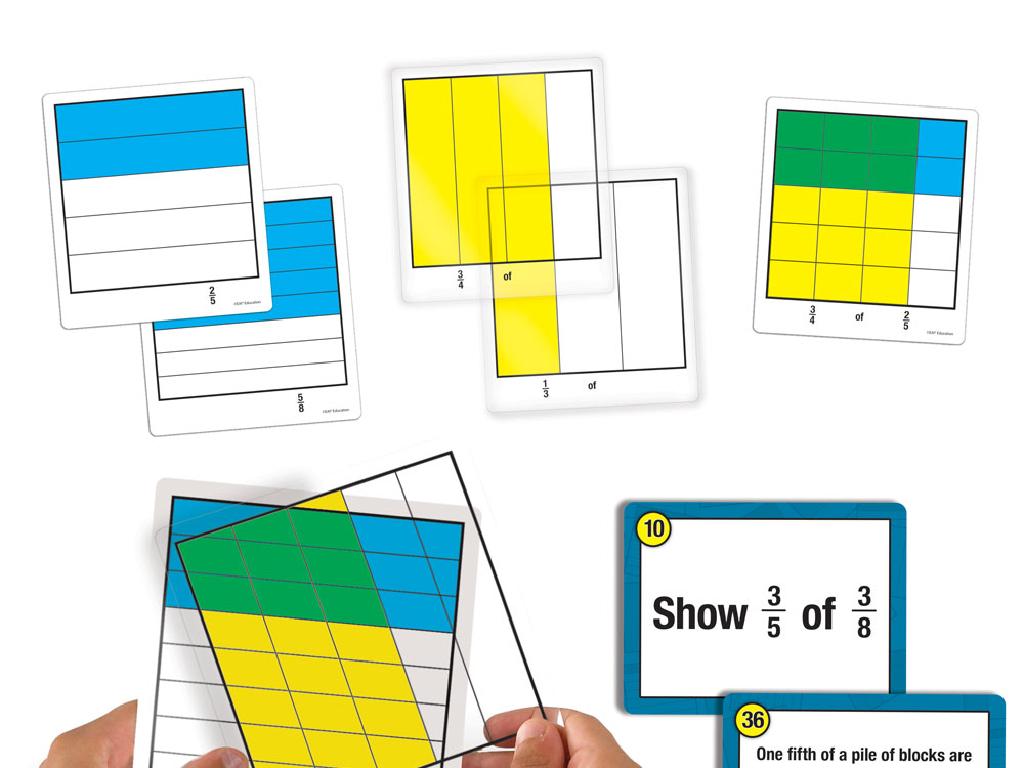How Do Balanced And Unbalanced Forces Affect Motion?
Subject: Science
Grade: Fourth grade
Topic: Force And Motion
Please LOG IN to download the presentation. Access is available to registered users only.
View More Content
Today’s Adventure: How Forces Affect Motion
– What is force? A push or a pull
– Force makes things move or stop
– Motion: Movement of objects
– Objects move in different ways
– Balanced forces: No motion change
– Equal forces, no movement change
– Unbalanced forces: Motion changes
– One force stronger, object moves
|
Begin the lesson by defining force as a push or a pull that can cause an object to move, stop, or change direction. Explain that motion is simply the movement of objects. Introduce the concept of balanced forces, where equal forces acting on an object from opposite directions cancel each other out, resulting in no change in motion. Contrast this with unbalanced forces, where one force is stronger than the other, causing the object to move in the direction of the stronger force. Use everyday examples to illustrate these concepts, such as a game of tug-of-war for balanced forces and pushing a shopping cart for unbalanced forces. Encourage students to think of their own examples and to consider how these principles apply to objects at rest and in motion.
Understanding Forces
– Force: a push or a pull
– Everyday force examples
– Gravity pulling objects down, magnets pulling metal
– Measuring force in Newtons
– One Newton is the force needed to move 1 kg at 1 m/s²
– Forces affect motion
– Balanced forces don’t change motion; unbalanced do
|
This slide introduces the concept of force to the students, explaining it as a push or a pull that can cause objects to move, stop, or change direction. Provide everyday examples of forces, such as pushing a swing or pulling a wagon, to help students relate to the concept. Explain that force is measured in units called Newtons, named after Sir Isaac Newton. Emphasize that the effects of forces on an object’s motion depend on whether the forces are balanced or unbalanced. Balanced forces keep an object moving at the same speed or staying still, while unbalanced forces cause an object to start moving, speed up, slow down, or change direction.
Types of Forces: Contact & Non-Contact
– Contact forces: touch needed
– Examples: friction, air resistance
– Friction: sliding a book, air resistance: falling leaf
– Non-contact forces: no touch
– Examples: gravity, magnetic force
– Gravity: apple falling from tree, magnetic: magnets attracting/repelling
|
This slide introduces students to the concept of different types of forces that can affect motion. Contact forces require two objects to be touching, like when you push a toy car and it moves due to the force of your push, or when you feel the resistance of the water while swimming, which is due to friction. Non-contact forces can act at a distance, such as gravity which keeps our feet on the ground, or the magnetic force which can pull or push objects without any direct contact. Understanding these forces helps us to see how they can cause an object to start moving, stop moving, or change direction.
Understanding Balanced Forces
– Balanced forces and motion
– Balanced forces don’t change an object’s motion.
– Equal size, opposite direction
– Forces are the same strength but push or pull oppositely.
– Book on a table example
– A book stays still on a table because forces are balanced.
|
This slide introduces the concept of balanced forces to the students. Explain that when forces are balanced, they cancel each other out and do not cause a change in the object’s motion. This means the object will not start moving if it is at rest, or it will not stop or change direction if it is already moving. Use the example of a book on a table to illustrate this concept: the force of gravity pulling the book down is balanced by the table pushing the book up, so the book stays in place. Encourage students to think of other examples where forces might be balanced and share their ideas.
Unbalanced Forces and Motion
– Unbalanced forces change motion
– When forces are unequal, they make things move or stop.
– Forces are unequal and vary in direction
– Imagine a tug-of-war game where one side is stronger.
– Example: Kicking a soccer ball
– A still ball moves when kicked because of the force applied.
|
This slide introduces the concept of unbalanced forces and their effect on motion, which is a key concept in understanding how objects move. Unbalanced forces occur when two forces acting on an object are not equal in size, causing the object to accelerate or change direction. A practical example for the students to relate to is kicking a soccer ball, which moves because the force of the foot kicking it is greater than the force of gravity and friction acting against it. Discuss with the students other examples of unbalanced forces they might encounter in their daily lives, such as pushing a toy car or pulling a wagon.
How Forces Affect Motion
– Force, mass, and acceleration link
– F=ma explains how force affects an object’s speed and direction.
– Unbalanced forces cause movement
– If forces on an object are unequal, it will start moving or change direction.
– Balanced forces keep things steady
– When forces are equal, objects stay still or keep moving at the same speed.
– Motion effects with balanced forces
– Objects in motion stay at the same speed if the forces are balanced.
|
This slide introduces the fundamental concepts of how forces affect motion, tailored for a fourth-grade science class. Begin with Newton’s Second Law of Motion (F=ma) to explain how force relates to an object’s mass and the acceleration it experiences. Discuss how unbalanced forces, where the total force on an object is not zero, result in the object’s motion changing – either starting to move, stopping, or changing direction. Contrast this with balanced forces, where equal forces acting on an object in opposite directions result in no change in motion; the object will either remain at rest or continue moving at a constant velocity. Use everyday examples to illustrate these concepts, such as pushing a toy car to make it move (unbalanced force) or a book resting on a table remaining stationary (balanced forces).
Newton’s First Law of Motion: Understanding Inertia
– Objects at rest remain still
– Objects in motion keep moving
– Unbalanced forces cause changes
– When forces are unequal, they can speed up, slow down, or change direction of an object
– This is known as the Law of Inertia
– ‘Inertia’ means tendency to resist changes in motion
|
Newton’s First Law, often called the Law of Inertia, tells us that if something is sitting still, it will stay still until something makes it move. If something is moving, it will keep moving in the same way until something makes it stop or change direction. This ‘something’ is called an unbalanced force. It’s important for students to understand that motion doesn’t change without a reason, and that reason is an unbalanced force. Examples to discuss could include a soccer ball remaining still until kicked (unbalanced force) or continuing to roll until friction (another unbalanced force) slows it down. Encourage students to think of other examples from their daily life where they observe the Law of Inertia.
Exploring Motion: Push and Pull
– Predict motion from push or pull
– Class Activity: Toy car ramps
– Use toy cars and ramps to see how force affects motion
– Observe changes in motion
– Notice how cars move differently with varied forces
– Record and discuss results
– Write down observations to share with the class
|
This slide introduces a hands-on activity to help students understand the concepts of balanced and unbalanced forces and their effects on motion. Start by asking students to predict what they think will happen when forces are applied to an object. Set up ramps and let students experiment by pushing or pulling toy cars up and down. Have them observe how the cars’ motion changes with different strengths of pushes or pulls. Encourage them to record their observations and be ready to discuss their findings. This activity will visually demonstrate the principles of force and motion, making the learning experience engaging and memorable.
Class Activity: Exploring Forces with Toy Cars
– Predict car speed on different ramps
– Test cars on ramps of varying steepness
– Observe and record the speed changes
– Does a steeper ramp make the car go faster or slower?
– Discuss findings with the class
|
This interactive class activity is designed to help students understand the concepts of balanced and unbalanced forces and their effects on motion. Students will use toy cars and ramps to experiment with how the steepness of a ramp affects the speed of the car. Before the experiment, ask students to predict what they think will happen. Then, have them test their predictions by releasing toy cars on ramps of different steepness and observe the changes in speed. Students should take notes on their observations. After the testing phase, organize a group discussion where students can share their findings and observations. Possible activities include measuring the distance traveled by the cars, timing the descent, and comparing results between different ramp angles. This hands-on experience will help solidify their understanding of the relationship between force and motion.
Conclusion: Forces in Our Daily Lives
– Recap: Balanced vs. Unbalanced Forces
– Balanced forces don’t change motion, unbalanced forces do.
– Daily life examples of forces
– Riding a bike (balanced), pushing a cart (unbalanced).
– Reflect on today’s discoveries
– Open floor for questions
|
As we wrap up today’s lesson, we’ll revisit the key concepts of balanced and unbalanced forces. Balanced forces are equal in size but opposite in direction and do not cause a change in motion, while unbalanced forces are not equal and cause an object to start moving, stop, or change direction. Provide everyday examples such as riding a bicycle on a flat road (balanced) versus pushing a shopping cart (unbalanced). Encourage students to think about how these forces play a role in their own lives. Finally, open the floor for any questions or wonders the students might have, allowing them to express their curiosity and solidify their understanding of the lesson’s content.
Homework Challenge: Forces Around Us
– Find examples of balanced forces
– Objects at rest or moving at constant speed
– Find examples of unbalanced forces
– Objects speeding up, slowing down, or changing direction
– Draw or describe your examples
– Bring your findings to class
|
This homework assignment is designed to help students observe and understand the concepts of balanced and unbalanced forces in a practical, real-world setting. Balanced forces are when two forces acting on an object are equal in size but opposite in direction, resulting in no change in motion. Unbalanced forces occur when one force is greater than its opposite force, causing a change in motion. Encourage students to look for everyday examples, such as a book resting on a table (balanced) or a ball rolling down a hill (unbalanced). They can draw pictures or write descriptions of their observations. This activity will prepare them for a discussion in the next class and reinforce their learning through visual and written expression.




